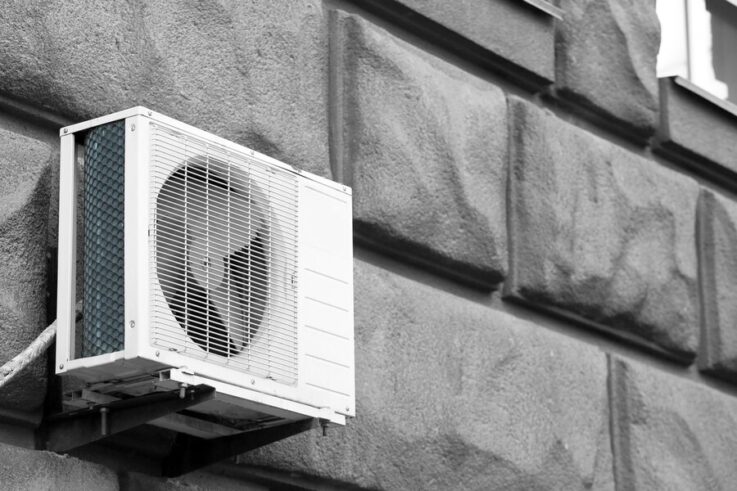
Understanding Commercial HVAC Installation Sterling Prices
Determining the cost of commercial HVAC installation Sterling can be challenging, as several factors influence the final price. From the size of the building to the specific HVAC system requirements, understanding these elements is essential for budgeting and planning. Business owners need to be aware of the variables that impact installation costs to make informed decisions and ensure their investment in a new HVAC system delivers optimal efficiency and comfort for their commercial spaces.
Elements Affecting Commercial HVAC Installation Costs
When it comes to commercial HVAC installation Sterling prices, various factors contribute to the overall cost. The type of HVAC system selected plays a significant role, with more advanced systems often carrying higher upfront costs but offering greater long-term efficiency. Additionally, the complexity of the installation process, including ductwork modifications, electrical upgrades, and any necessary structural changes, can increase labor expenses.
The local climate and specific energy efficiency requirements also influence the choice of system and, consequently, the cost. Finally, the reputation and experience of the HVAC contractor can impact pricing, as more established professionals may charge higher rates but deliver superior results.
Building Size and Its Impact on Pricing
The size of the building is a critical factor in determining commercial HVAC installation Sterling costs. Larger buildings require more extensive HVAC systems capable of managing greater square footage, which often results in higher equipment costs. Additionally, larger spaces may necessitate more complex ductwork and zoning, further increasing installation expenses.
The scale of the project also affects the amount of labor required, as larger installations typically take more time and resources to complete. Properly sizing the HVAC system to match the building’s needs is essential for both efficiency and cost-effectiveness, ensuring that the system operates optimally without unnecessary energy waste.
HVAC System Types and Their Cost Variations
Choosing the right type of HVAC system is a significant factor in determining commercial HVAC installation Sterling prices. Different systems, such as split systems, packaged units, or variable refrigerant flow (VRF) systems, come with varying costs based on their complexity and capabilities. For example, VRF systems are more expensive due to their advanced technology and ability to provide precise temperature control across multiple zones.
On the other hand, traditional split systems may be more affordable but might not offer the same level of efficiency or flexibility. The choice between these systems depends on the specific needs of the building, including size, layout, and climate control requirements, all of which influence the overall installation cost.
The Role of Energy Efficiency in Installation Costs
Energy efficiency is a crucial consideration in commercial HVAC installation Sterling pricing, as more efficient systems often come with higher upfront costs but offer long-term savings. Systems with higher SEER (Seasonal Energy Efficiency Ratio) ratings or those certified by ENERGY STAR typically cost more initially due to their advanced components and technology.
However, these systems consume less energy, leading to lower utility bills and a reduced environmental impact. Additionally, energy-efficient HVAC systems may qualify for tax incentives or rebates, offsetting some of the installation costs. Business owners must weigh the initial investment against potential savings and environmental benefits when choosing an energy-efficient HVAC system.
Significance of Proper Sizing for HVAC Systems
Proper sizing is essential in determining the effectiveness and cost of commercial HVAC installation Sterling projects. An HVAC system that is too large or too small for a building can lead to significant issues, including increased energy consumption, uneven temperature control, and premature wear and tear on system components.
Oversized systems often cycle on and off more frequently, leading to higher operational costs and reduced lifespan, while undersized systems may struggle to maintain the desired indoor climate, causing discomfort and inefficiency. Accurate load calculations, performed by a qualified HVAC contractor, ensure that the system installed matches the building’s specific heating and cooling needs, optimizing performance and minimizing unnecessary expenses.
Ductwork Requirements and Installation Expenses
Ductwork plays a pivotal role in commercial HVAC installation Sterling costs, as it is responsible for distributing heated or cooled air throughout the building. The condition, layout, and material of the existing ductwork can significantly impact installation expenses. In some cases, extensive modifications or complete replacements may be necessary to accommodate the new HVAC system, especially in older buildings where ductwork may not meet current standards.
Custom ductwork designs, insulation, and sealing also add to the overall cost but are crucial for ensuring optimal airflow and energy efficiency. Properly installed ductwork minimizes energy loss, enhances system performance, and contributes to a comfortable indoor environment.
Labor Costs: What to Expect
Labor costs are a significant component of commercial HVAC installation Sterling pricing, as the complexity and scale of the project directly influence the amount of time and expertise required. Experienced HVAC technicians command higher rates, but their knowledge ensures that the installation is done correctly and efficiently. The installation process may involve various tasks, including system setup, ductwork modification, electrical work, and system testing, all of which contribute to labor costs.
Additionally, projects that require specialized skills, such as integrating advanced controls or zoning systems, may incur higher labor charges. Understanding the scope of work and the expertise needed can help businesses budget more accurately for these expenses.
Additional Features and Their Influence on Pricing
Incorporating additional features into an HVAC system can significantly impact commercial HVAC installation Sterling costs. Features such as smart thermostats, air purifiers, humidifiers, and advanced zoning systems enhance the functionality and efficiency of the HVAC system but also increase the overall cost. Smart thermostats, for instance, offer better control over the indoor climate and energy usage, but they require an initial investment in both equipment and installation.
Similarly, air quality enhancements, like HEPA filters or UV lights, improve indoor air but add to the expense. While these features can lead to improved comfort, energy savings, and health benefits, businesses must weigh these advantages against the added costs when planning their installation.
Permits and Inspections: Hidden Costs to Consider
When planning for commercial HVAC installation Sterling, it’s essential to factor in the hidden costs associated with permits and inspections. Local regulations often require permits for HVAC installations, which involve fees that can vary depending on the project’s complexity and the specific requirements of the area. Additionally, post-installation inspections by local authorities are typically necessary to ensure the system complies with building codes and safety standards.
These inspections might uncover issues that require additional work, further increasing costs. While permits and inspections are crucial for legal compliance and ensuring a safe, functional system, they can add unexpected expenses to the overall budget, making it vital for businesses to plan accordingly.
Long-Term Savings vs. Upfront Costs
Balancing long-term savings against upfront costs is a critical consideration in commercial HVAC installation Sterling projects. While opting for a cheaper, less efficient system might seem cost-effective initially, it can lead to higher energy bills, frequent repairs, and a shorter system lifespan. Conversely, investing in a more energy-efficient system with advanced features may require a higher initial investment but can result in significant savings over time through reduced energy consumption and maintenance costs.
Additionally, energy-efficient systems often qualify for rebates or tax incentives, further offsetting the initial expenses. Business owners must carefully evaluate the potential long-term savings versus upfront costs to ensure their investment delivers the best value and performance.
Choosing the Right HVAC Contractor in Sterling
Selecting the right contractor is crucial for the success of your commercial HVAC installation Sterling project. A qualified contractor not only ensures that the installation is performed correctly but also provides valuable guidance on system selection, sizing, and energy efficiency. When choosing a contractor, it’s important to consider their experience, certifications, and reputation within the community.
Look for contractors who are licensed, insured, and have a proven track record of successful commercial installations. Reading reviews, asking for references, and obtaining multiple quotes can help you make an informed decision. The right contractor will deliver a high-quality installation that meets your business’s specific needs, ensuring long-term reliability and efficiency.
Budgeting for Commercial HVAC Installation
Proper budgeting is essential when planning for commercial HVAC installation Sterling. The total cost of installation can vary widely depending on several factors, including the type of system, building size, labor, permits, and additional features. Start by obtaining detailed estimates from reputable contractors that break down all the associated costs, including equipment, labor, and any necessary permits or inspections.
It’s also wise to set aside a contingency budget for unexpected expenses, such as additional ductwork or system upgrades. By carefully planning and budgeting for these costs, businesses can avoid financial surprises and ensure they’re making a sound investment in their HVAC system, balancing upfront costs with long-term savings.
Understanding the various elements that influence commercial HVAC installation Sterling prices is essential for making informed decisions about your business’s heating and cooling needs. From system type and sizing to additional features and labor costs, each factor plays a role in determining the overall investment. At Cool Factory, Inc, we are committed to providing transparent pricing and expert guidance to ensure your HVAC installation is both cost-effective and efficient.
Whether you’re planning a new installation or upgrading an existing system, our team is here to help. Contact us today at (703) 713-5113 to discuss your project and schedule a consultation. Let us help you achieve the optimal comfort and efficiency for your Sterling, VA business.






